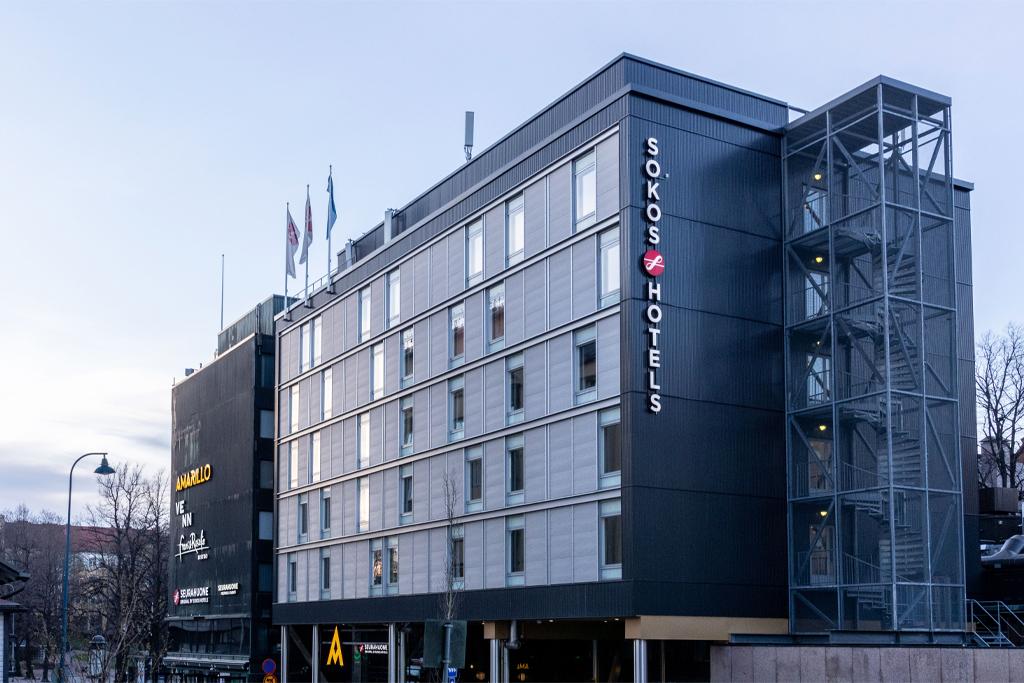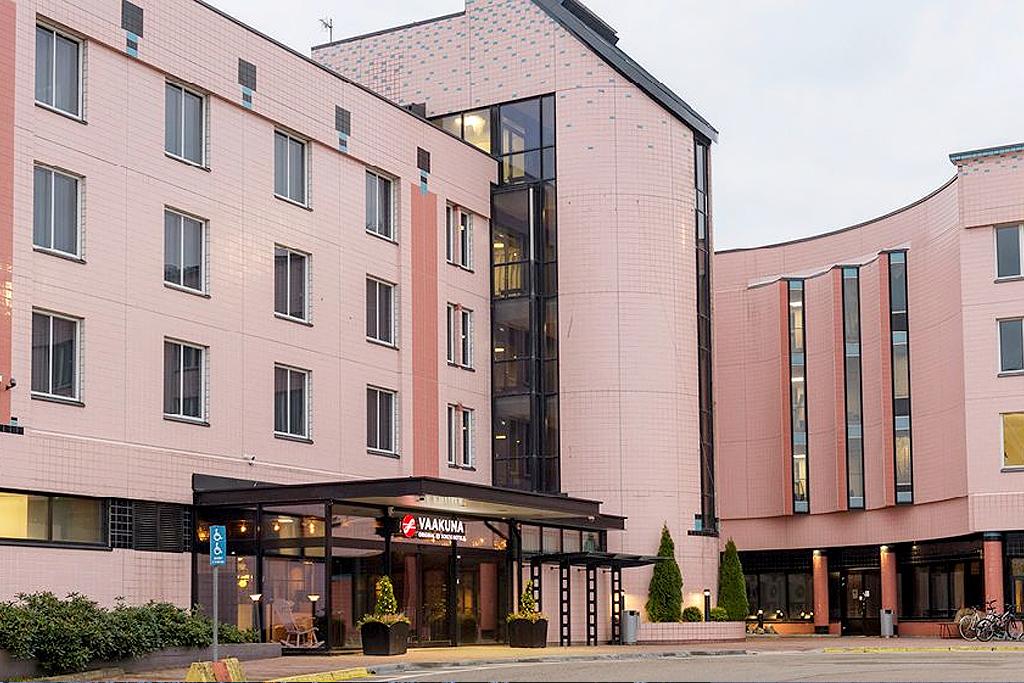The upgrades of Original Sokos Hotels in Kotka and Kouvola were carried out with customer experience and adaptability in mind.
We have planned several expansion and renovation projects in the hotel and restaurant facilities of Original Sokos Hotel Vaakuna in Kouvola and Original Sokos Hotel Seurahuone in Kotka. At the same time, we have gained an understanding of the special characteristics of hotel projects.

Hotel projects in Kymenlaakso region
Hotels are subject to heavy wear and tear and require more frequent upgrades than many other property types. In addition to renovation and building technology updates, hotel facilities often must be modified to serve new purposes of use and customer needs.
We have acted as the main and architectural designers of the renovation projects of Original Sokos Hotel Vaakuna in Kouvola and Original Sokos Hotel Seurahuone in Kotka.
“The customer experience consists of how well the building works as a whole,” says architect Tuukka Karjalainen. “Even small details can stick in the customer’s mind, such as correctly placed sockets or whether there were enough parking spaces. That’s why designing always starts from the customer’s needs.”
Design starts with the user.
The renovation projects of both Seurahuone and Vaakuna were carried out so that the hotel was in operation throughout the project. The designer plays a significant role in the phasing of the project: in the design phase, the project must be divided so that it can be carried out in a suitable order. The hotel’s own staff are a valuable resource in this. By listening to the users, the project can be scheduled and planned so that the hotel remains operational, and the renovation does not cause significant inconvenience to staff or customers.
The hotel building contains a lot of invisible infrastructure, such as storage space and staff break rooms. Logistic arrangements for cleaning also require appropriate facilities to function. During the planning phase, it is important to talk to knowledgeable staff members and understand the requirements of their work. In this way, the premises can be designed to serve them and their customers in the busy everyday life of the hotel.

Understanding the principles and tools of user-based design helps the designer gather user understanding. For example, we designed the kitchens in close cooperation between the kitchen and cleaning staff, equipment suppliers and the architect to ensure that the premises would serve their users as well as possible.
“Our staff likes what they see, and they are happy with the new premises,” says Olli Järvinen, Hotel Manager of Vaakuna and Seurahuone. “We have also received very good feedback from customers at both sites. Good feedback is, of course, the sum of many factors, but it matters what kind of framework the work is carried out and what kind of framework we offer our customers.”
Hotel restaurants also require their own kind of expertise from the designer: the hotel’s restaurant facilities often must function as a breakfast restaurant, lunch canteen or nightclub. The compact utilization rate sets its own requirements for the design, so that the premises are suitable for all necessary uses and resistant to wear and tear. In addition, the number of personnel varies, so the supervision and management of premises must be possible with different numbers of personnel.
Lessons from Hotel Repairs
Hotel buildings have often undergone many kinds of renovations and changes, which is why it is important to ensure the accuracy of the initial data carefully during the design phase. A wide variety of details can be found in the property that are not marked in the drawings. In addition, the dimensioning may not be accurate if several rounds of repairs and changes have been accumulated. Therefore, it is important to go on site to make sure that the designer has the necessary initial data that corresponds to reality.
On the other hand, an important task for the current designer is to ensure the future and adaptability of the building. The changes must be demolished later so that the property continues to meet the changing requirements of hotel operations.
“Kotkan Seurahuone was not originally a hotel, but the purpose of the building has changed over the years,” says Hotel Manager Olli Järvinen. “So, it was important that the designer took the booth, as the dimensions were not correct everywhere, for example. I am very pleased with the end result of both projects: the projects have been able to take into account both our wishes and construction-related issues that we had not been able to anticipate.”
In addition to the main and architectural design, we also ensured the coordination of building permits and ensuring that the rest of the design team always had access to up-to-date information. Both the Vaakuna and Seurahuone projects involved many of the same designers, which made the work easier in many ways. This is an important benefit of long-term partnerships: tried and tested practices can be utilized in several projects, and team members become familiar with their working methods.
Read more
Shopping center Pasaati: versatile and long-term design work
Shopping center Pasaati in the center of Kotka has been serving its customers for almost 20 years. We continue to act as the design partner of the shopping center and ensure that the facilities adapt to the changing needs of stores and customers.
Shopping center Pasaati: versatile and long-term design workUser-centric Concept Design supports investment in the renewal of business premises.
Over the decades, our customer’s premises have undergone a major transformation from a slaughterhouse to office space. Despite several renovations, the premises no longer serve the needs of its users and the changing working life. Our user-oriented study project provided design guides and budget calculations for three different design options.
User-centric Concept Design supports investment in the renewal of business premises.Laitila Architects helps Hyphen localise their designs for Finnish environment
Our localisation services helped global architecture firm Hyphen provide their American client with designs that suit the Finnish climate and comply with local legislation.
Laitila Architects helps Hyphen localise their designs for Finnish environment